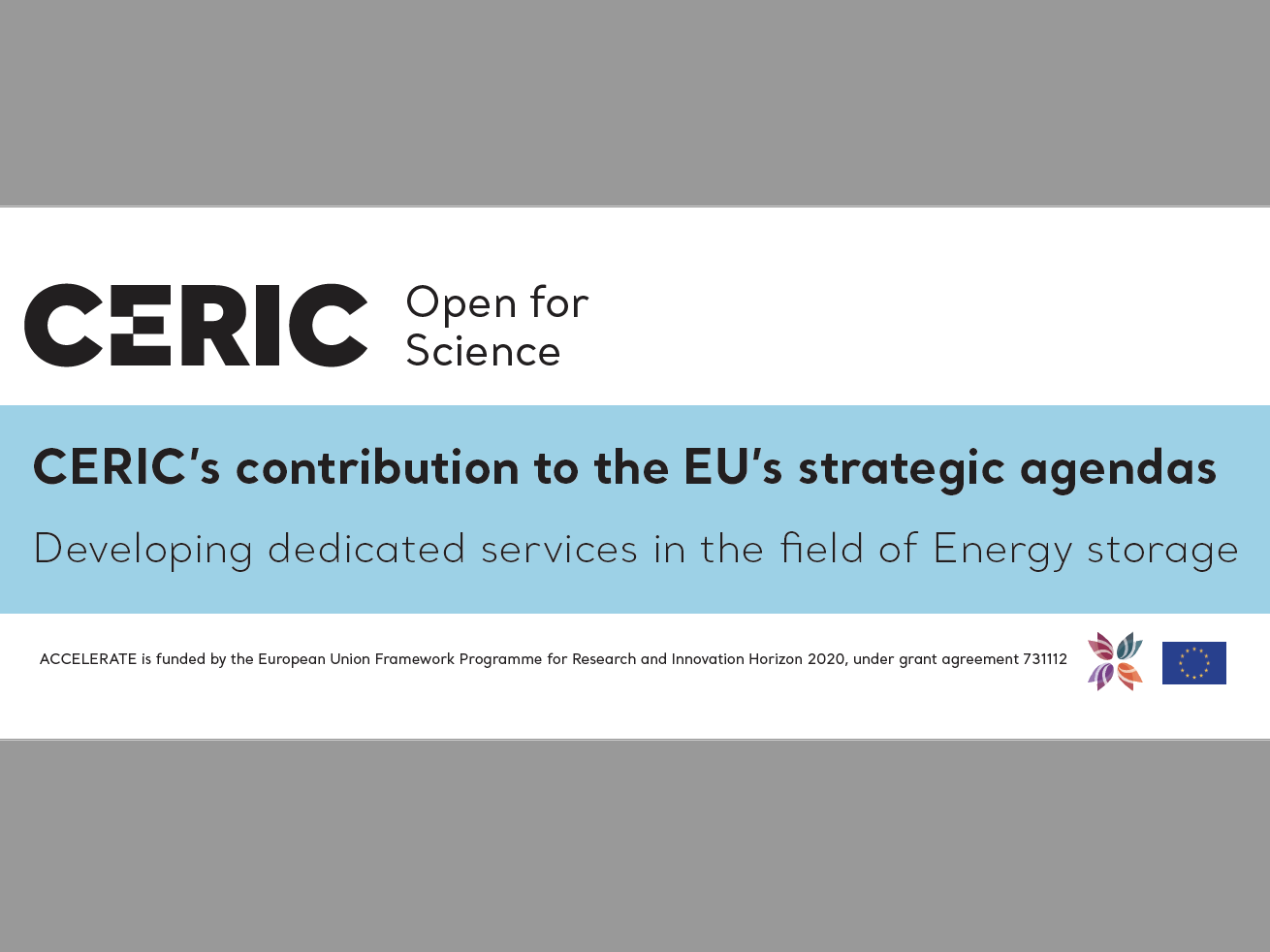CERIC’s contribution to the EU’s strategic agendas - Developing dedicated services in the field of Energy storage
Introduction: Research infrastructures of European interest (RIs) are rightfully considered one of the most successful achievements of the European Research Area to date. Over the past 18 years, the field has been developed in the frame of the European Strategy Forum on Research Infrastructures (ESFRI). In close partnership with the national governments and the European Commission, ESFRI has, through its roadmaping process, established over 50 European Research Infrastructures, mobilising investments of approximately €20 billion across the EU. The approach has been based on national RI roadmaps developed with a degree of coordination in almost all of the EU Member States, which results in strengthening of the joint activities and pooling of resources across the EU. A marked success was also the adoption of an ERIC regulation, which facilitates the establishment and operation of Research Infrastructures with European interest. Despite the success, the field of RIs faces many challenges, which ESFRI addressed in its recently published White paper. Among others, this paper emphasizes the need to enhance the role of Research Infrastructures as truly strategic investments across borders and different sectoral domains, contributing to European strategic agendas and enabling European research and innovation to address pressing and complex societal challenges. To this end, ‘the RIs are invited to include outreach to wider policy objectives as part of their strategic approach and to exploit their potential for international cooperation. Sectoral research agendas should be considered for formulating RI missions and objectives, e.g. in relation to the UN SDGs.’ CERIC’s contribution to the EU’s strategic agendas: CERIC-ERIC is a multi-sited infrastructure, with facilities in 8 countries, enabling characterisation and modification of a broad field of materials, from Life Sciences, Nanoscience and Nanotechnology, to Cultural Heritage, Environment and Materials Sciences. According to its Statutes, CERIC’s multiple objectives are ambitious. It should contribute to scientific excellence, education & training, collaboration with industry, to the integration of national capabilities, and to the development of the European Research Area. Since its establishment in mid-2014, policy makers have added additional objectives to RIs in general, such as the open access to the data that they are producing and the most recent one is that of contributing to the EU’s strategic agendas. RIs are certainly capable of providing solutions to pressing societal challenges. This is clearly demonstrated during the current pandemic, with a number of RIs setting up dedicated COVID-19 services within weeks, with several ones providing continuous service to the users throughout the pandemic. It could be claimed that the RIs have always contributed to the solutions to societal challenges, in the fields of energy, environment, health, and cultural heritage, to name a few. Yet, the call of ESFRI for an increased focus on EU strategic agendas demonstrates that the message is not yet getting across. RIs need to respond collectively and more strategically. Business as usual will politically marginalize them, and this would negatively impact, also financially. The approach of CERIC is therefore to deliver on the priorities, which RI funders put in front of them, including the focus on the EU’s strategic agendas. Read the full article here to know more about CERIC’s contribution to the EU Green Deal, with a focus on energy storage. ► bit.ly/30t3YYX



